A High-Precision, Ultra-Short Baseline Positioning Method for Full Sea Depth
Abstract
:1. Introduction
- (1)
- The initial orientation of the current incoming wave is estimated by exploiting the positioning results of the previous 1 ping and the current attitude of the array. Then the phase shift beamforming is carried out to improve the signal processing gain.
- (2)
- According to the pulse compression results, the correlation coefficient is calculated to detect the arrival time of the signal. The non-system signal is eliminated according to the chirp gap to improve the reliability of the algorithm.
- (3)
- The multi-primitive square array is adopted, and the LS-ESPRIT algorithm is utilized to estimate the wave square position to improve the positioning accuracy and to improve the positioning result hopping problem.
2. Theoretical Analysis
2.1. Generation and Reception of Acoustic Signals
2.2. Signal Processing
| Algorithm 1: USBL positioning method of square array based on LS-ESPRIT |
| Step 1: Quadrature demodulation. Step 2: If it is in the search state, DFT beamforming is performed to search the signal and then enter the tracking state. If no signal is found, go to step 1. In the case of tracking state, phase shift beamforming is performed by utilizing the DFT beamforming result or tracking azimuth at the previous 1 ping position. Step 3: Pulse compression. Step 4: Detecting signals through correlation coefficients and calculating propagation delay. Step 5: The LS-ESPRIT algorithm is used to estimate DOA. Step 6: Calculate the relative position of the target according to the time delay and orientation and transform the attitude. Step 7: Sound speed correction. Step 8: Coordinate transformation. |
3. Experimental Verification
3.1. Simulation Verification
3.2. Anechoic Pool Experiment Verification
3.3. Marine Experimental Verification
4. Conclusions
Author Contributions
Funding
Institutional Review Board Statement
Informed Consent Statement
Data Availability Statement
Conflicts of Interest
References
- Liu, F. Technical Status and Development Trend of the Deep-sea Manned Submersible. J. Eng. Stud. 2016, 8, 172–178. [Google Scholar] [CrossRef]
- Yang, B.; Liu, Y.; Liao, J. Manned Submersibles-Deep-sea Scientific Research and Exploitation of Marine Resources. Bull. Chin. Acad. Sci. 2021, 36, 622–631. [Google Scholar]
- Ren, Y.; Liu, B.; Ding, Z. Research on the Current Status and Development Trend of Manned Submersibles. J. Ocean Technol. 2018, 37, 114–122. [Google Scholar]
- Xu, W.; Zhang, Q. Overview of Present Status and Development Trend of Full Ocean Depth Submarines. Shipbuild. China 2016, 57, 206–221. [Google Scholar]
- Sun, D.; Zheng, C.; Zhang, J.; Han, Y.F.; Cui, H.Y. Development and Prospect for Underwater Acoustic Positioning and Navigation Technology. Bull. Chin. Acad. Sci. 2019, 34, 331–338. [Google Scholar]
- Liu, S.; Guo, H.; Qian, Z.; Li, J.; Wang, X.; Sun, W.; Zhang, L.; Zhang, A. A Study on a Novel Inverted Ultra-Short Baseline Positioning System and Phase Difference Estimation. J. Mar. Sci. Engs. 2003, 11, 952. [Google Scholar] [CrossRef]
- Shi, Y.; Yin, J.; Han, X.; Guo, L. Advances in integrated technology of underwater acoustic communication, navigation, and positioning of submarines. J. Harbin Eng. Univ. 2023, 44, 1–10. [Google Scholar]
- Sun, D.; Ding, J.; Zheng, C.; Huang, W. An Underwater Acoustic Positioning Algorithm for Compact Arrays with Arbitrary Configuration. IEEE J. Sel. Top. Signal Process. 2019, 13, 120–130. [Google Scholar] [CrossRef]
- Wang, W.; Zhu, M.; Yang, B. Two High-Precision Ultrashort Baseline Location Methods Based on Phase Difference. IEEE Trans. Instrum. Meas. 2023, 72, 1–12. [Google Scholar] [CrossRef]
- Sun, D.; Cai, H.; Zheng, C.; Cheng, C. Stereo Array Positioning Algorithm Based on Vector Projection. J. Electron. Inf. Technol. 2022, 45, 31–40. [Google Scholar]
- Yu, M.; Hui, J.; Feng, H.; Zhang, X. Improved measurement methods for positioning precision of USBL. Ocean Eng. 2006, 24, 86–91. [Google Scholar]
- Zheng, C.; Li, Q.; Sun, D.; Zhang, D. An Improved Measurement Method for Array Design of USBL. Period. Ocean Univ. China 2009, 39, 505–508. [Google Scholar]
- Zheng, E.; Chen, X.; Sun, C.; Yu, H. An innovation four-element array to achieve high-precision positioning of the Ultra-short baseline. Appl. Acoust. 2013, 32, 15–22. [Google Scholar]
- Luo, Q.; Yan, X.; Ju, C.; Chen, Y.; Luo, Z. An Ultra-Short Baseline Underwater Positioning System with Kalman Filtering. Sensors 2021, 21, 143. [Google Scholar] [CrossRef] [PubMed]
- Zhu, Y.; Luo, J.; Zhang, K. DOA Estimation Algorithm of Wideband Digital Signal Based on Fitting Phase Difference and Frequency. Mod. Def. Technol. 2013, 41, 131–135. [Google Scholar]
- Debasis, K. Modified MUSIC algorithm for estimating DOA of signals. Signal Process. 1996, 48, 85–90. [Google Scholar]
- Viberg, M.; Ottersten, B.; Kailth, T. Detection and estimation in sensors arrays using weighed subspace fitting. IEEE Trans. Signal Process. 1991, 39, 2436–2449. [Google Scholar] [CrossRef]
- Viberg, M.; Ottersten, B. Sensor array processing based on subspace fitting. IEEE Trans. Signal Process. 1991, 39, 1110–1121. [Google Scholar] [CrossRef]
- Richard, R.; Thomas, K. ESPRIT-Estimation of Signal Parameters Via Rotational Invariance Techniques. IEEE Trans. Acoust. Speech Signal Process. 1989, 37, 984–995. [Google Scholar]
- Zhu, F.-Y.; Chai, S.-R.; Zou, Y.-F.; He, Z.X.; Guo, L.X. An Efficient and Accurate RCS Reconstruction Technique Using Adaptive TLS-ESPRIT Algorithm. IEEE Antennas Wirel. Propag. Lett. 2024, 23, 49–53. [Google Scholar] [CrossRef]
- Tian, T. Sonar Technology; Harbin Engineering University Press: Harbin, China, 2009; pp. 87–88. [Google Scholar]
- Zheng, J.; Ying, Q.; Yang, W. Signal and System; Higher Education Press: Beijing, China, 2000; pp. 341–346. [Google Scholar]
- Jia, W. The Calculation Method of the Eigenvalues of the Matrix. J. Dezhou Univ. 2017, 33, 1–8. [Google Scholar]
- Zhang, X.; Zhang, Y. Research on the Calibration Method of the Array Installation Error in Ultra-short Baseline Underwater Acoustic Locating System. Mine Warf. Ship Self-Def. 2012, 20, 28–31. [Google Scholar]
- Li, H.; Han, Y.; Zheng, C. Application of sound speed correlation technology in highly precise underwater positioning system. J. Navig. Position. 2020, 8, 47–52. [Google Scholar]
- Yu, M.; Cai, K.; Zheng, C.; Sun, D. Improvement of seafloor positioning through correction of sound speed profile temporal variation. IEEE/CAA J. Autom. Sin. 2023, 10, 2023. [Google Scholar] [CrossRef]
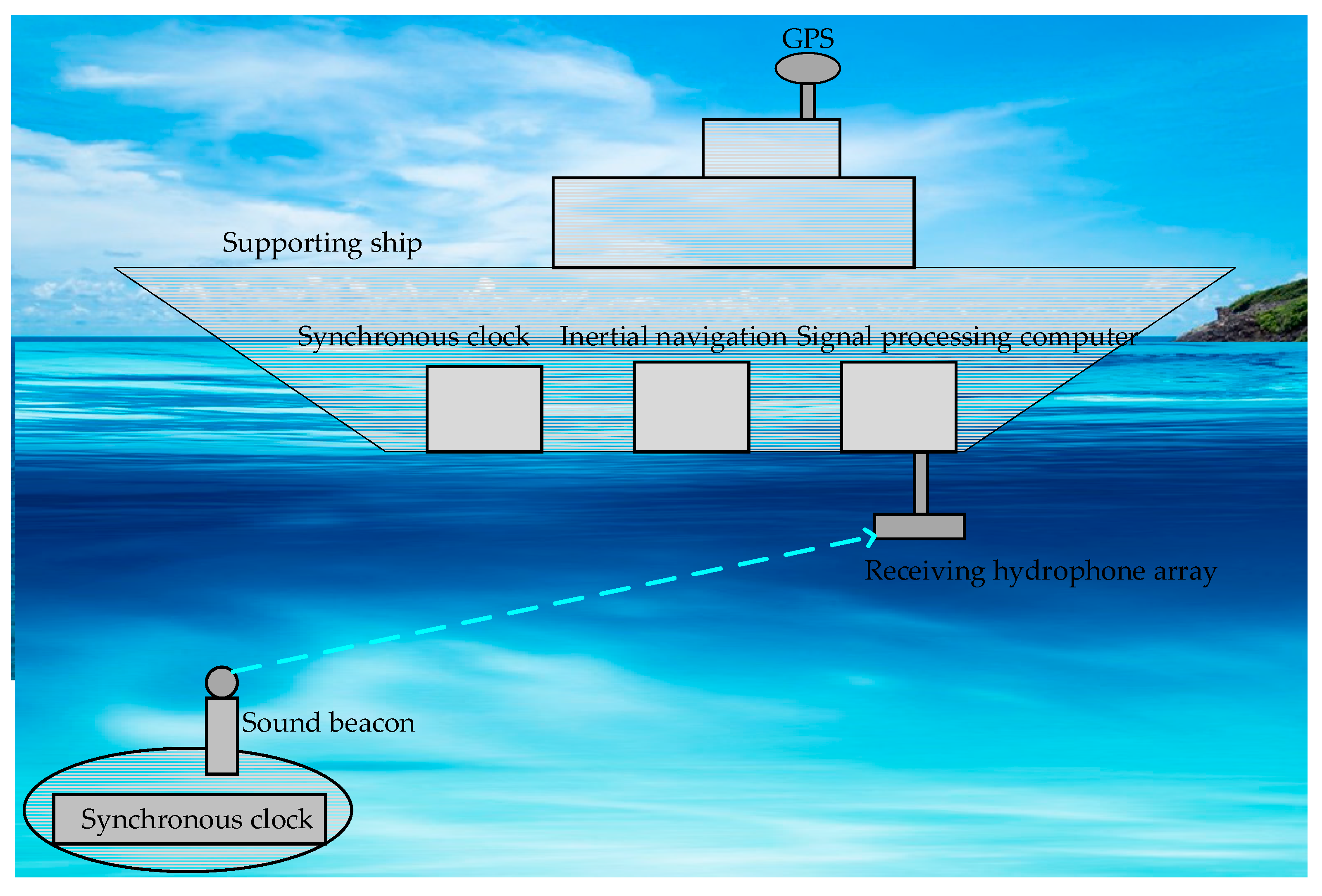

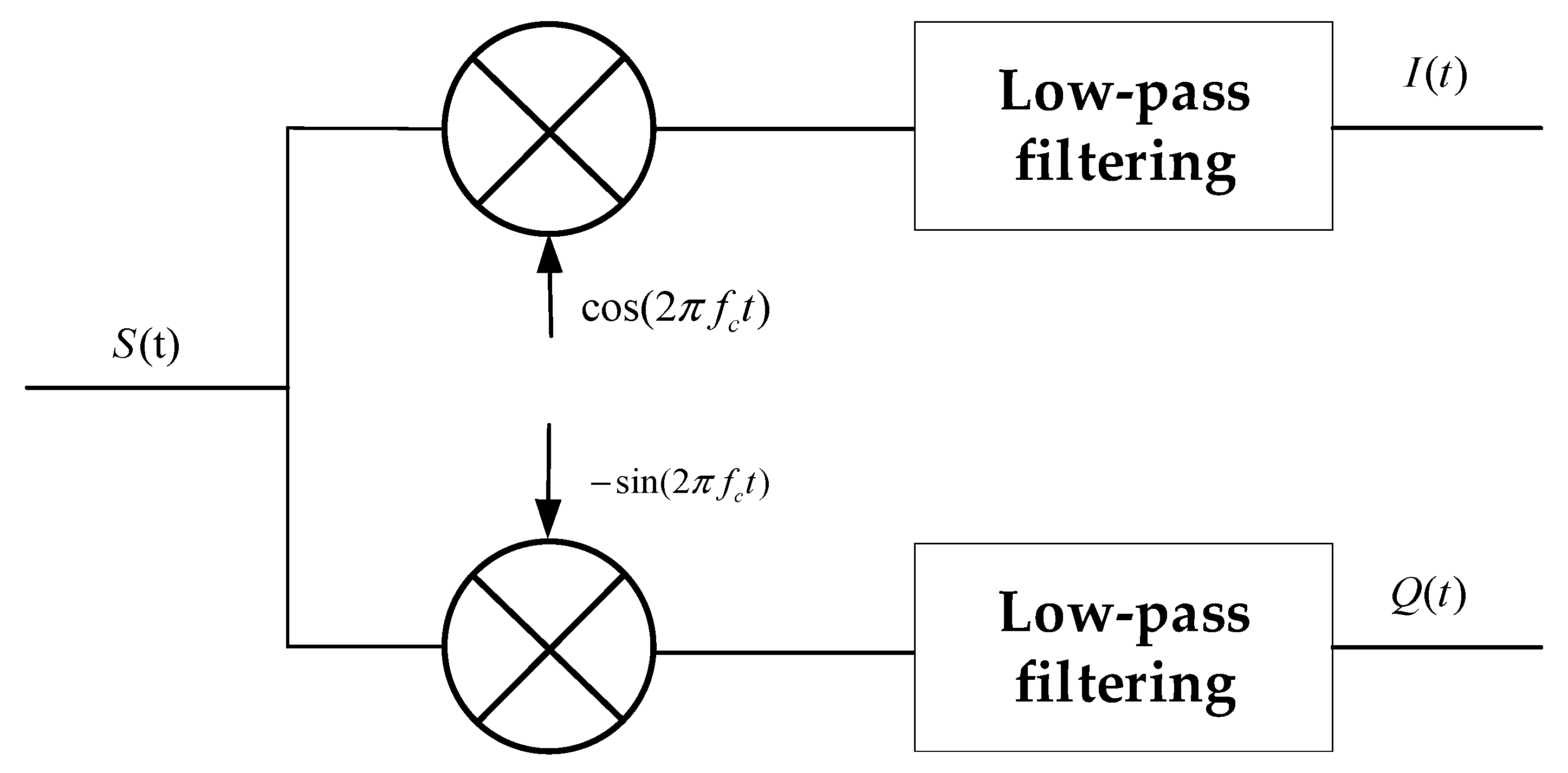
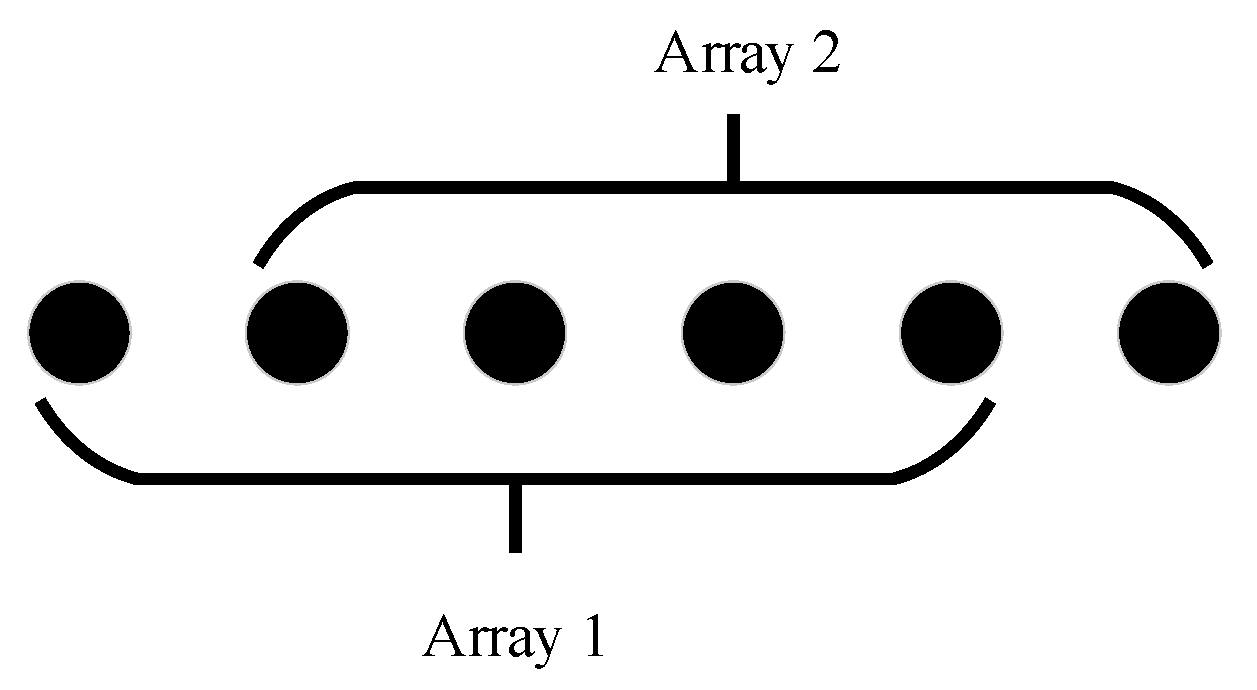
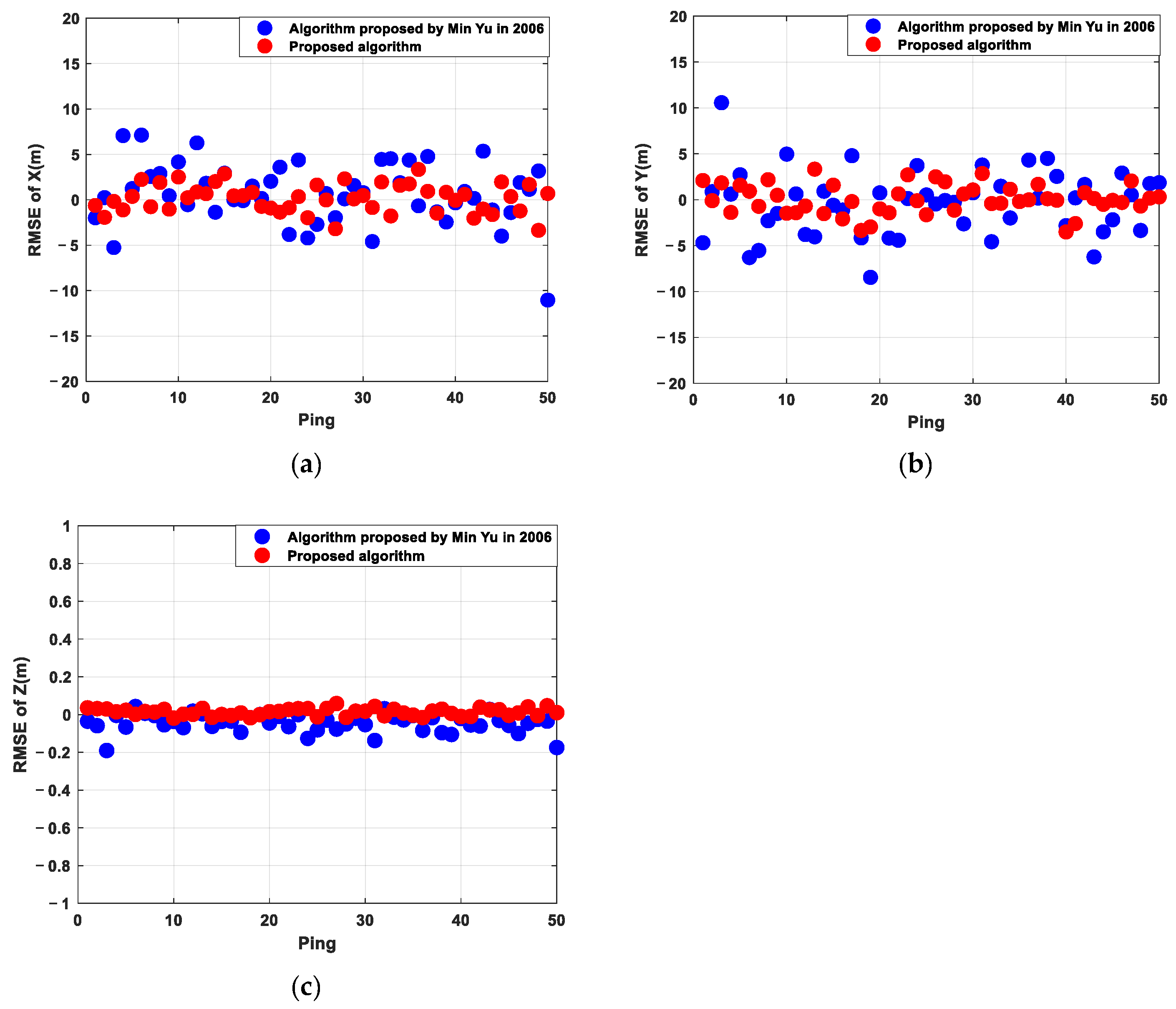

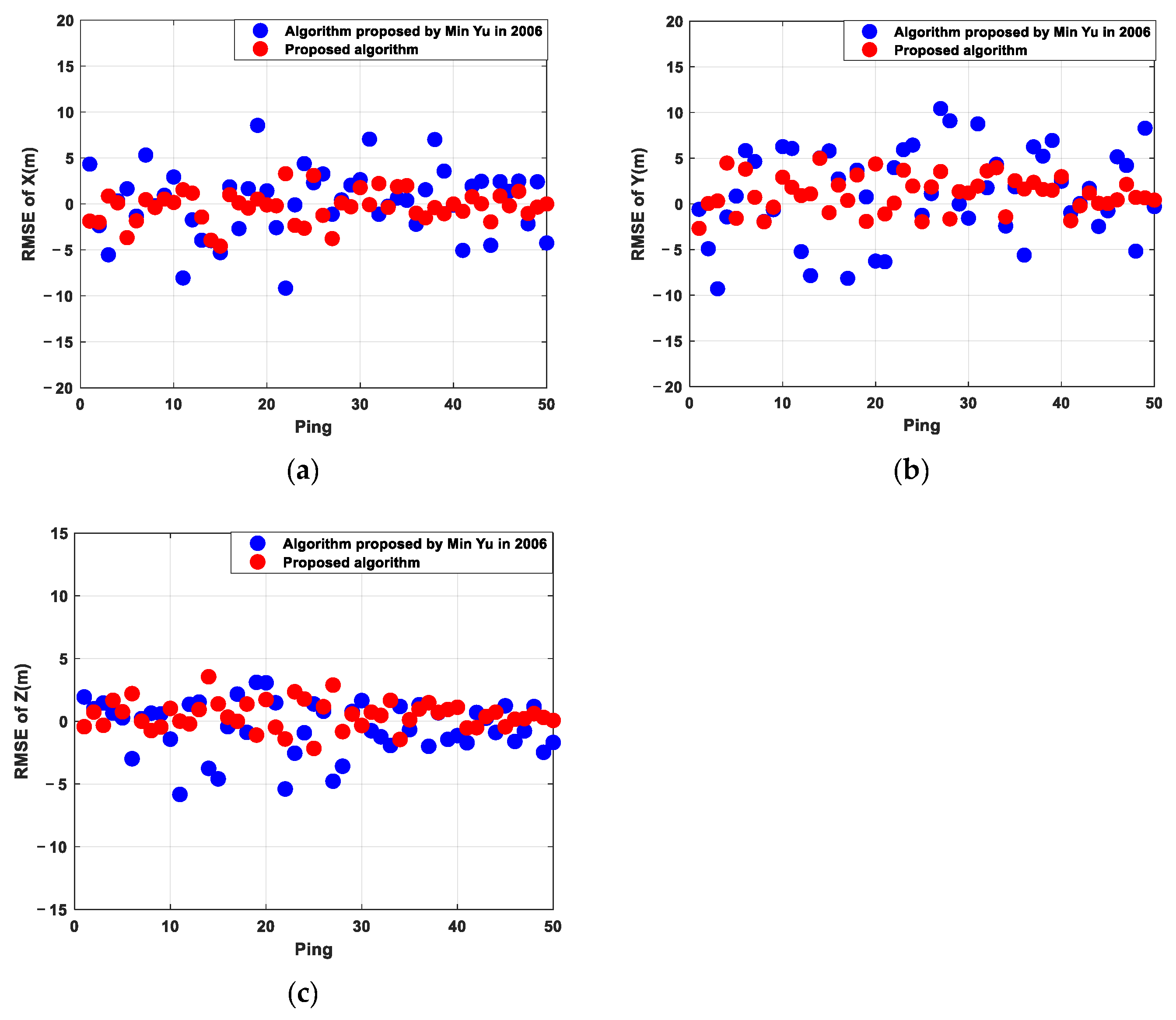
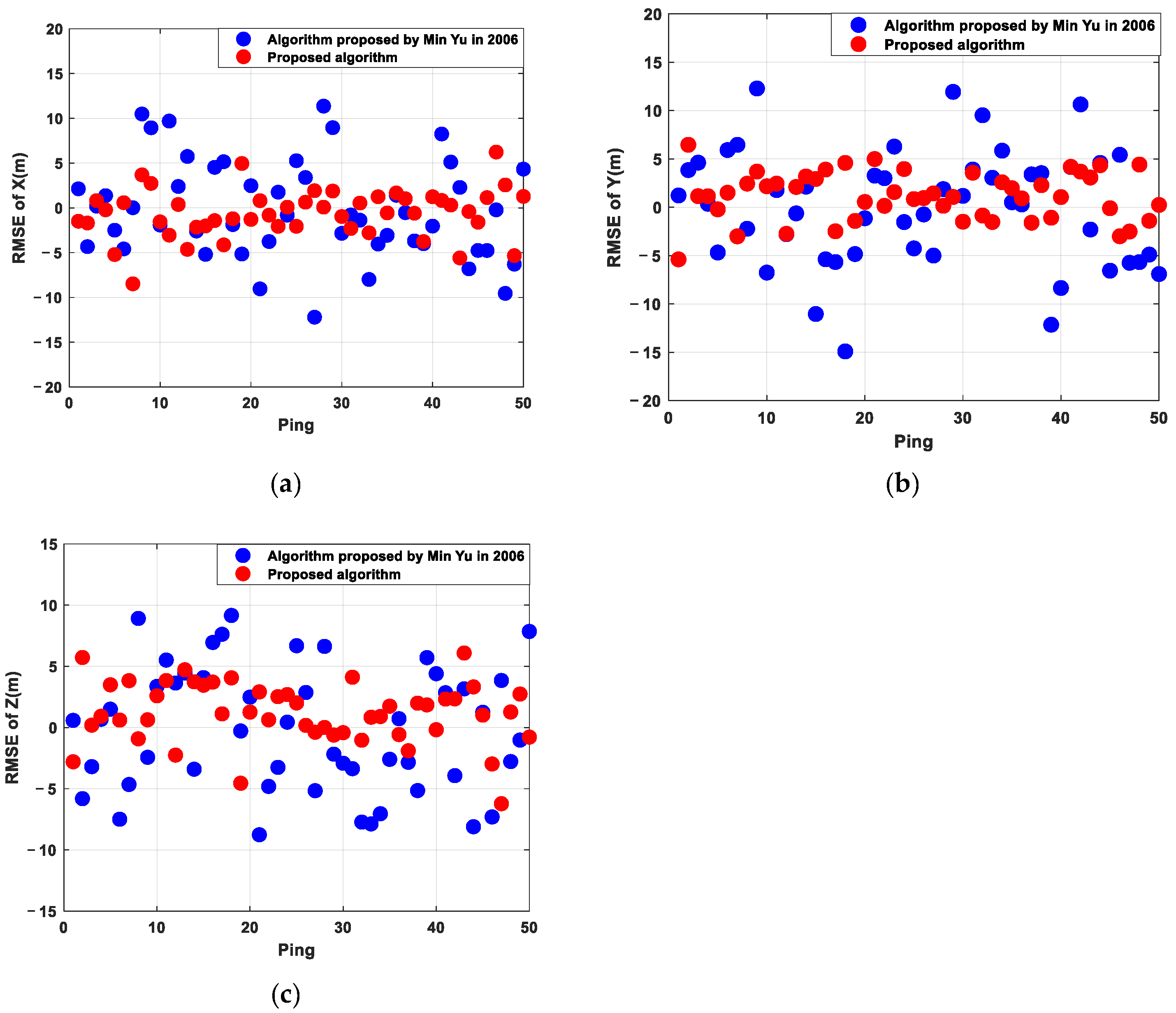

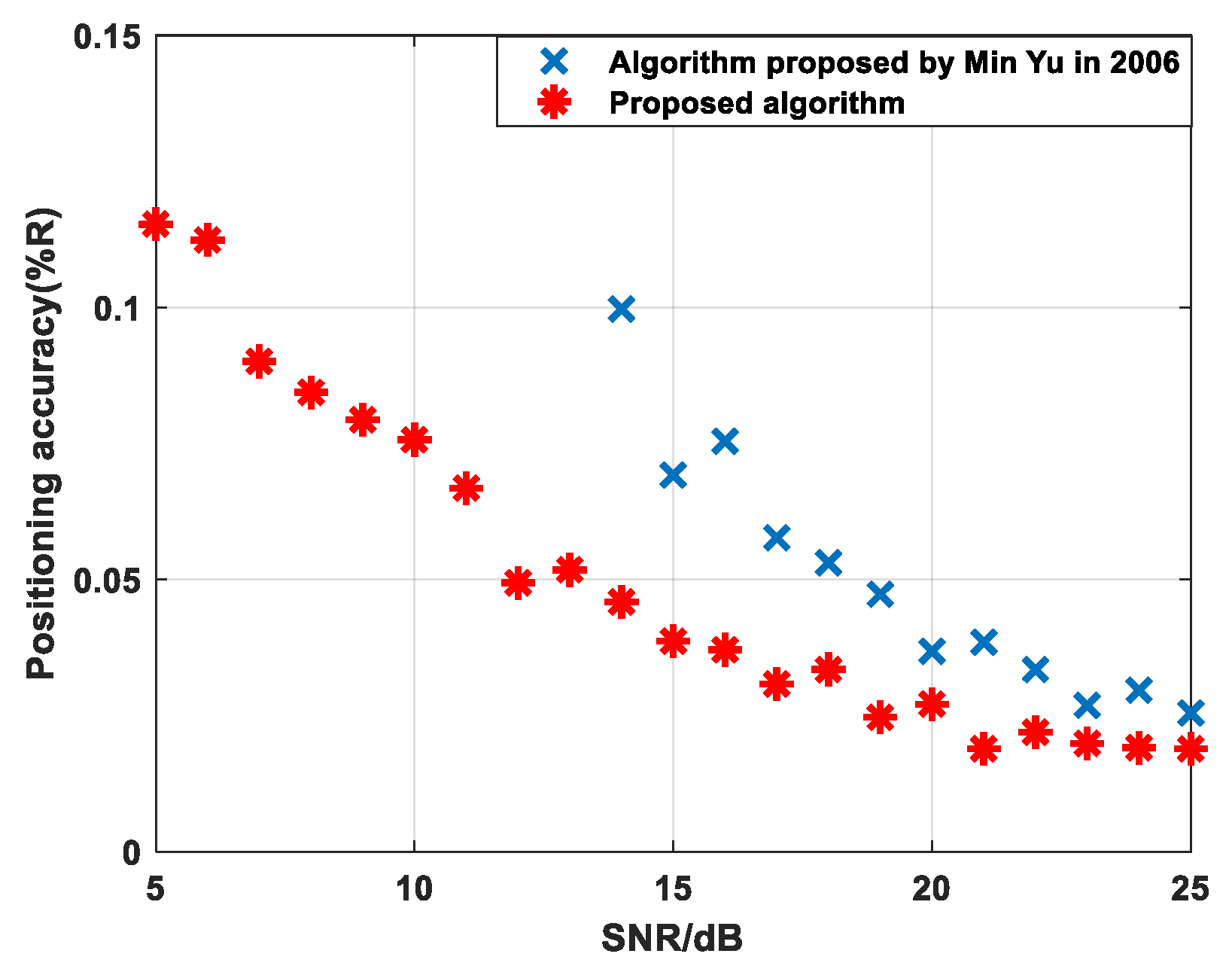
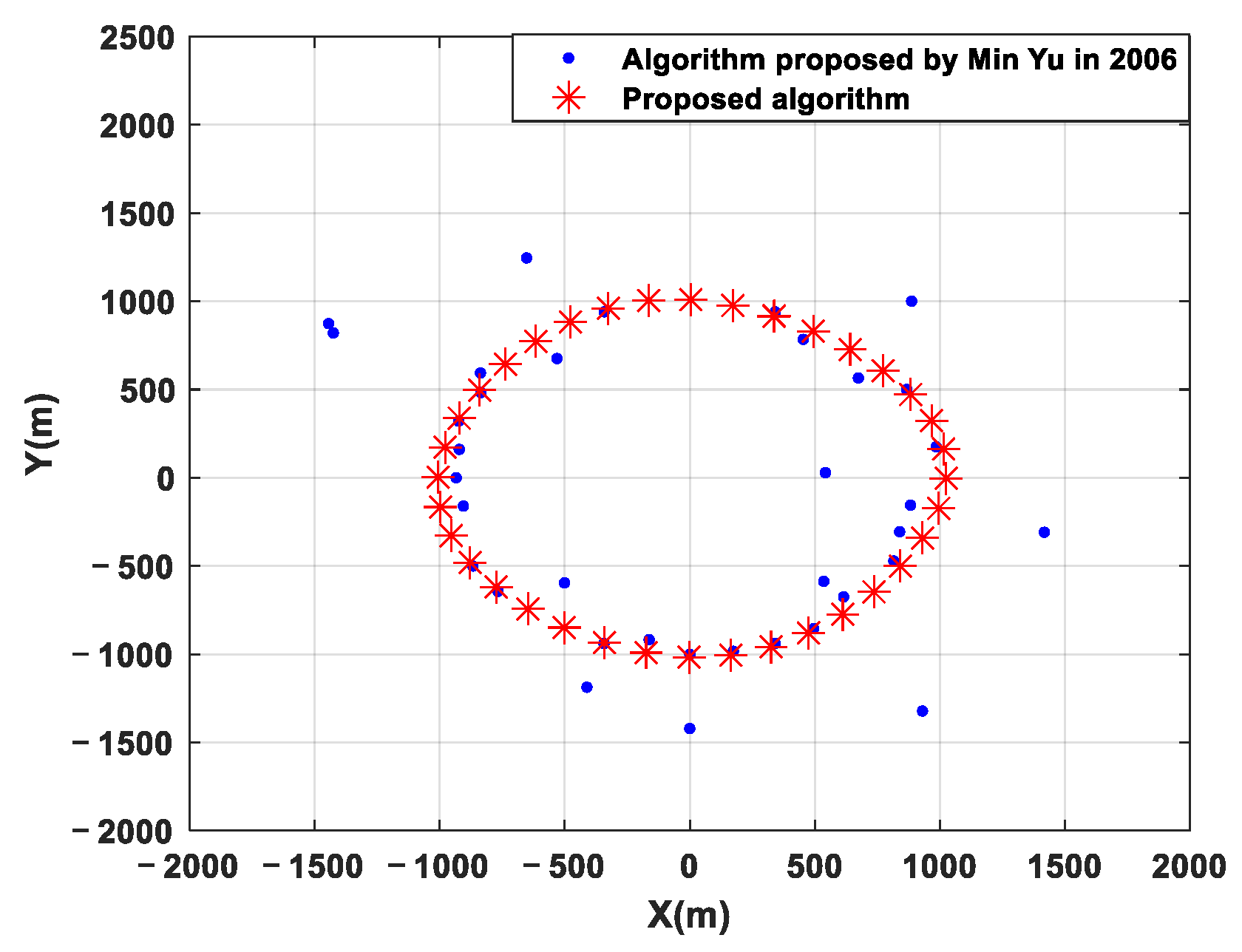
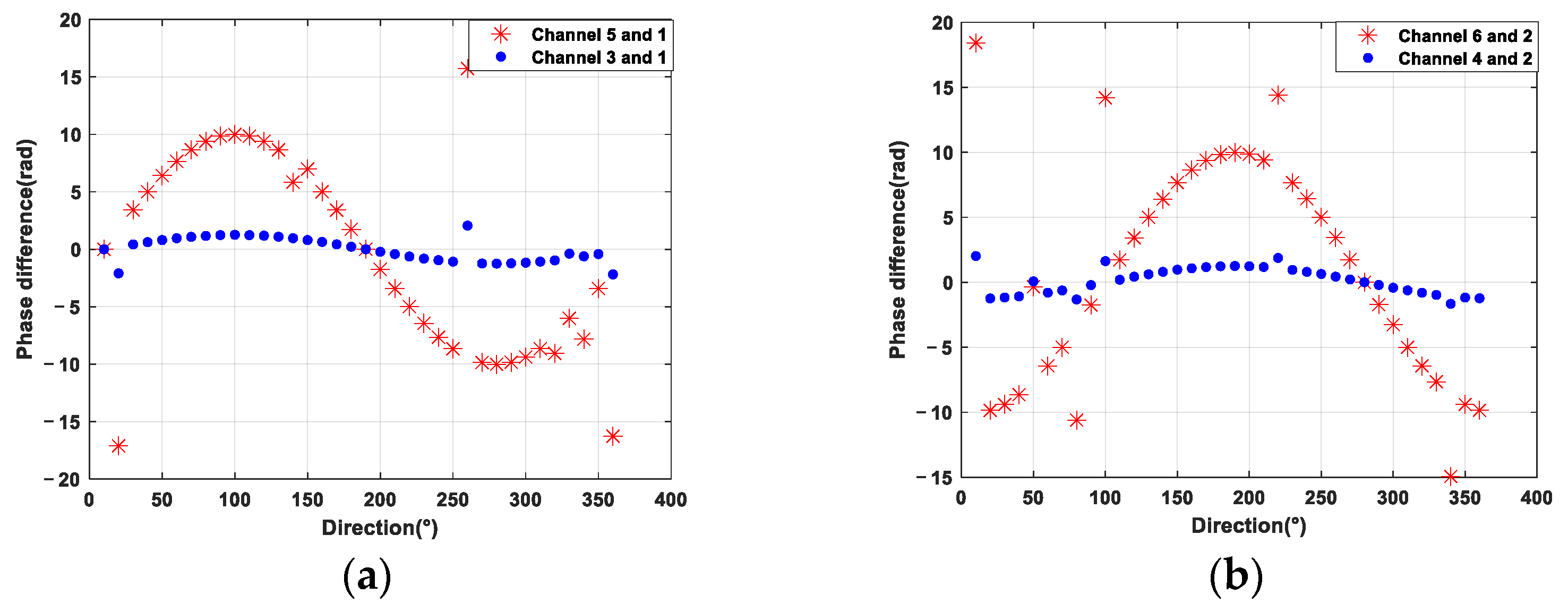
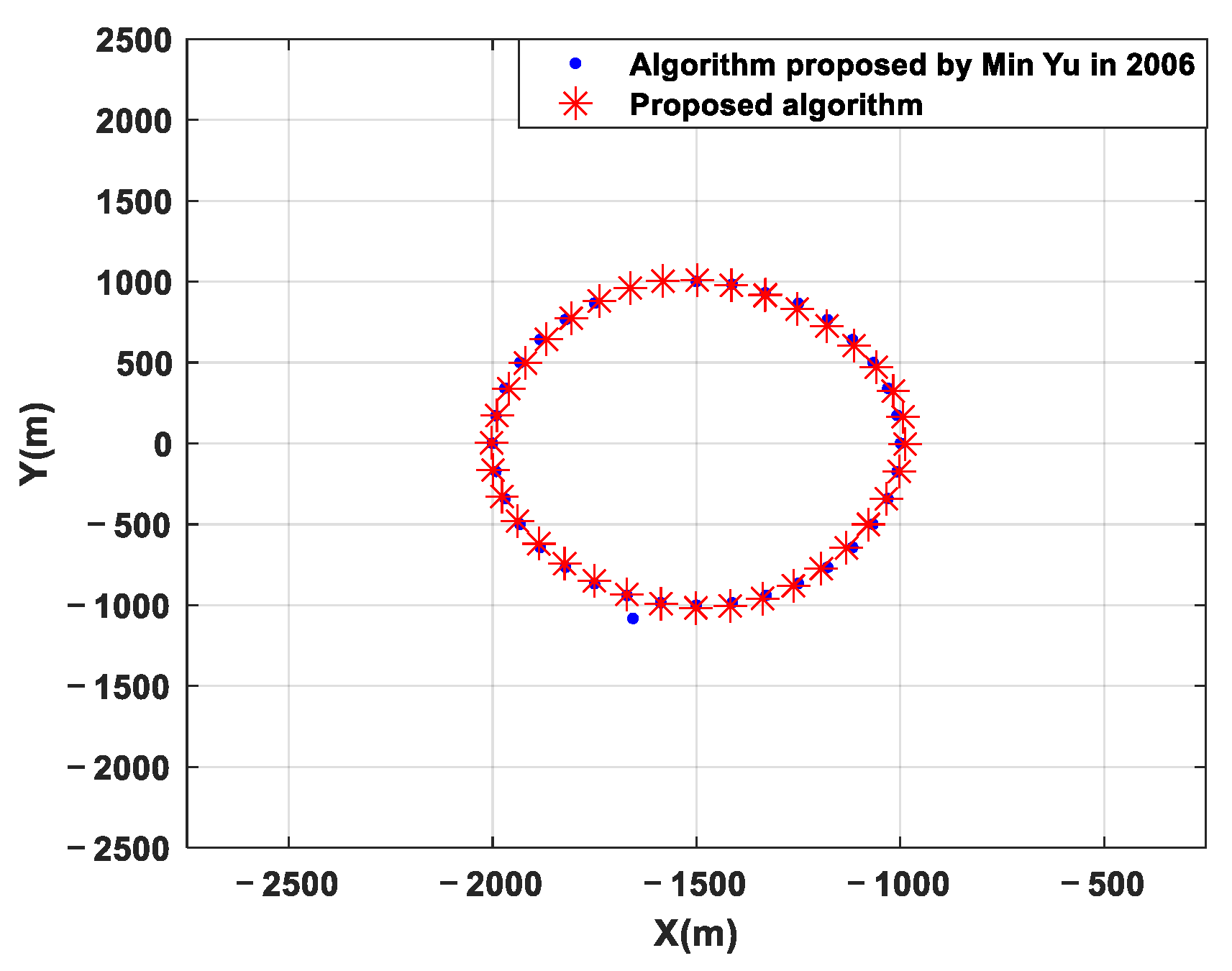

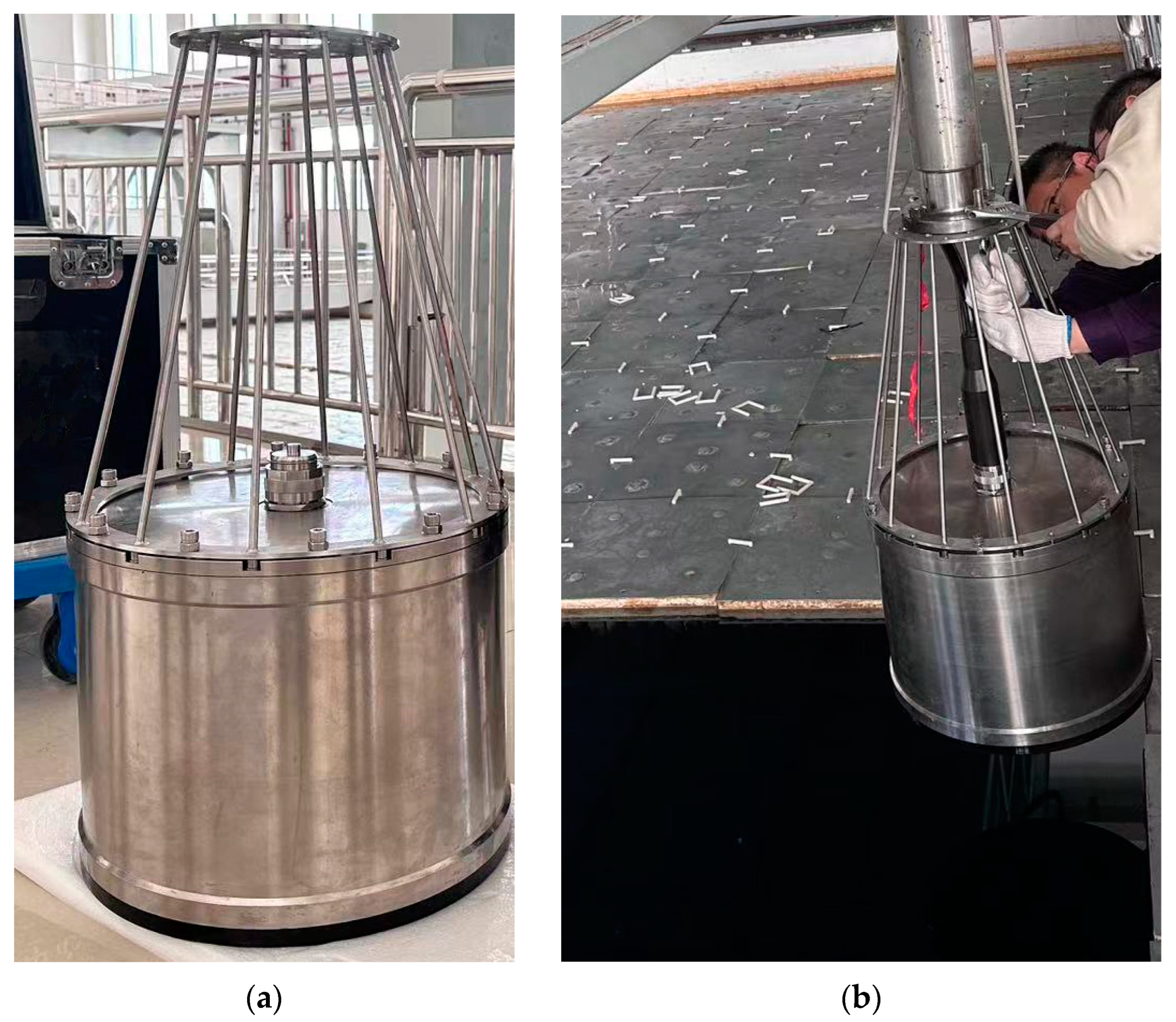
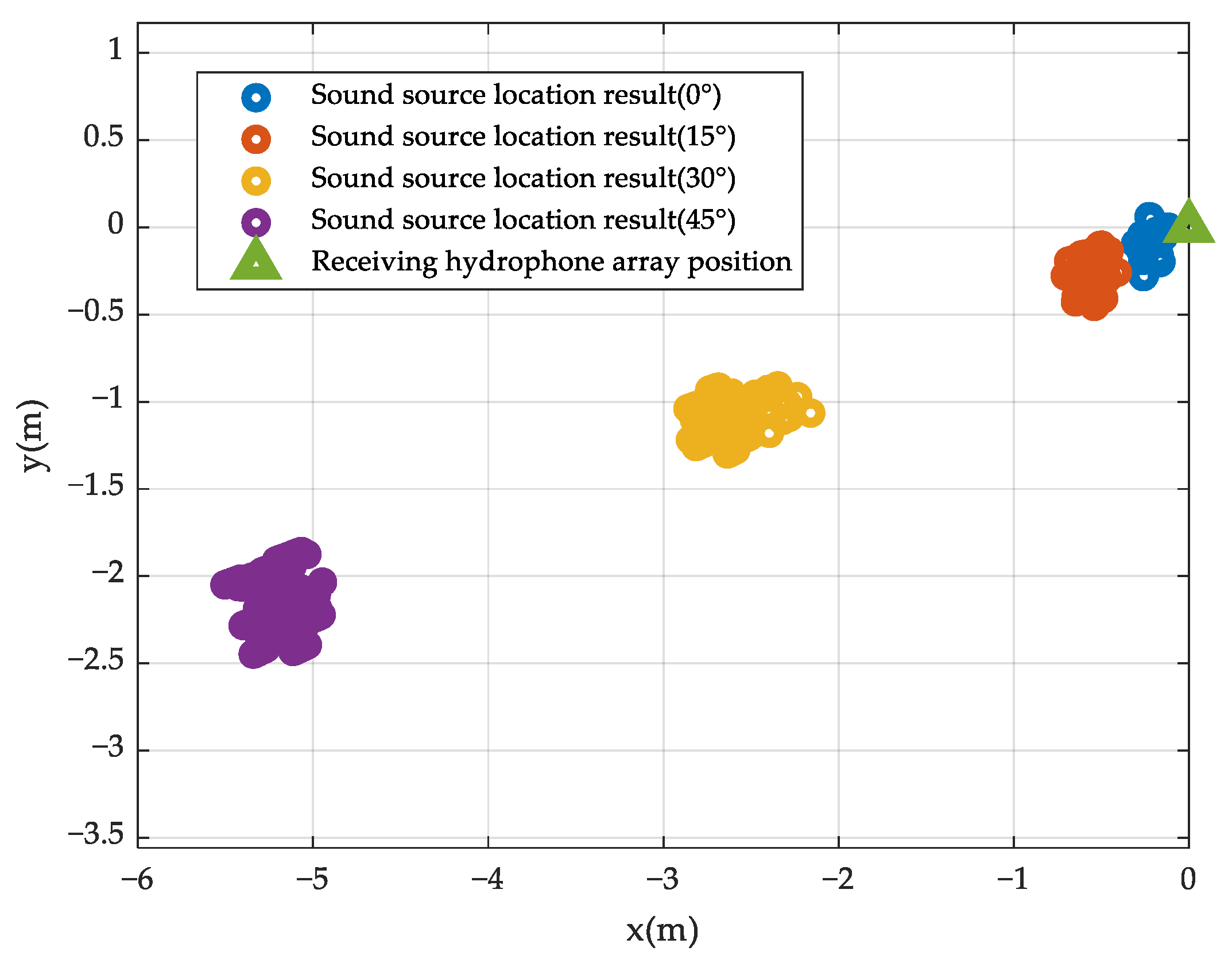
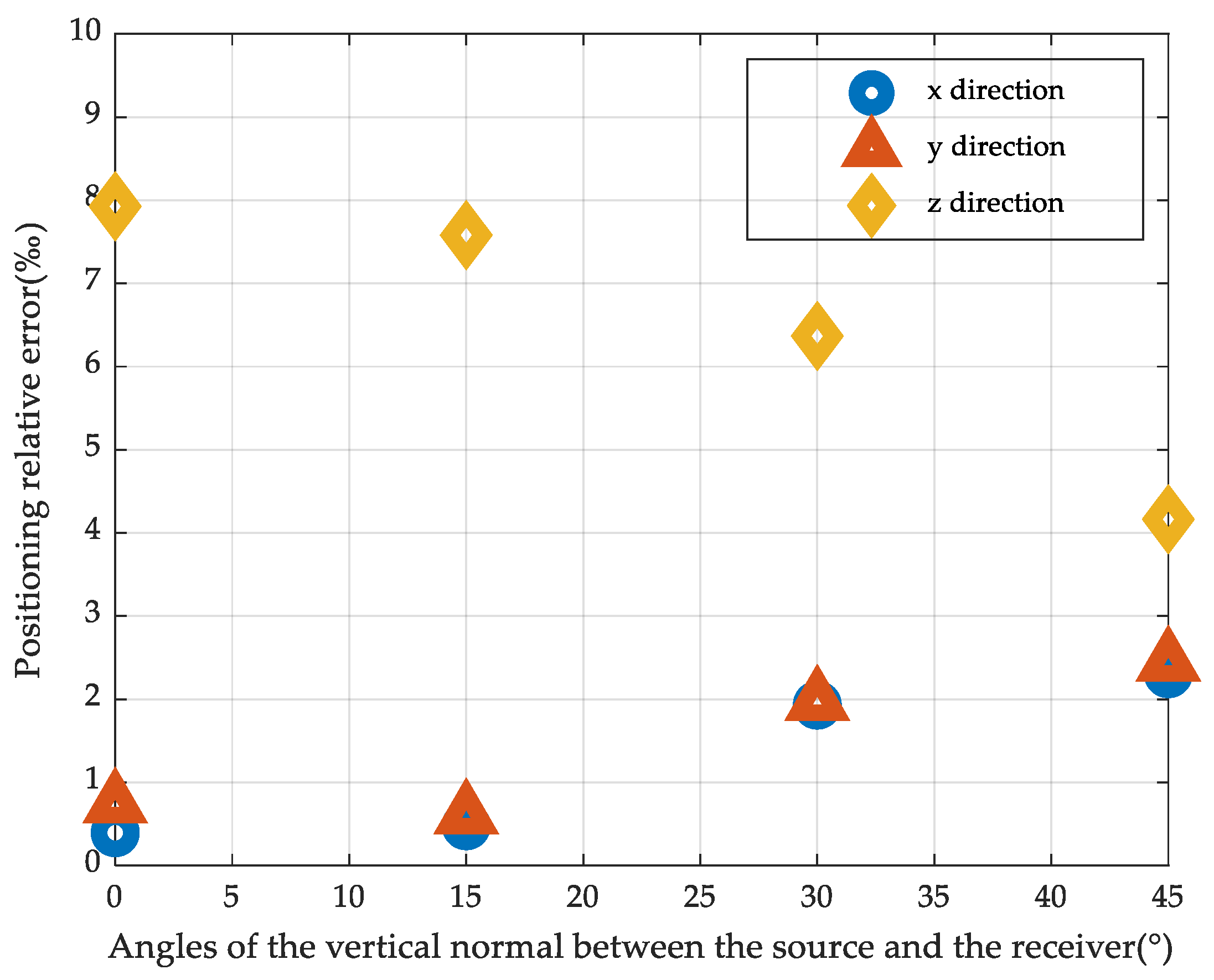

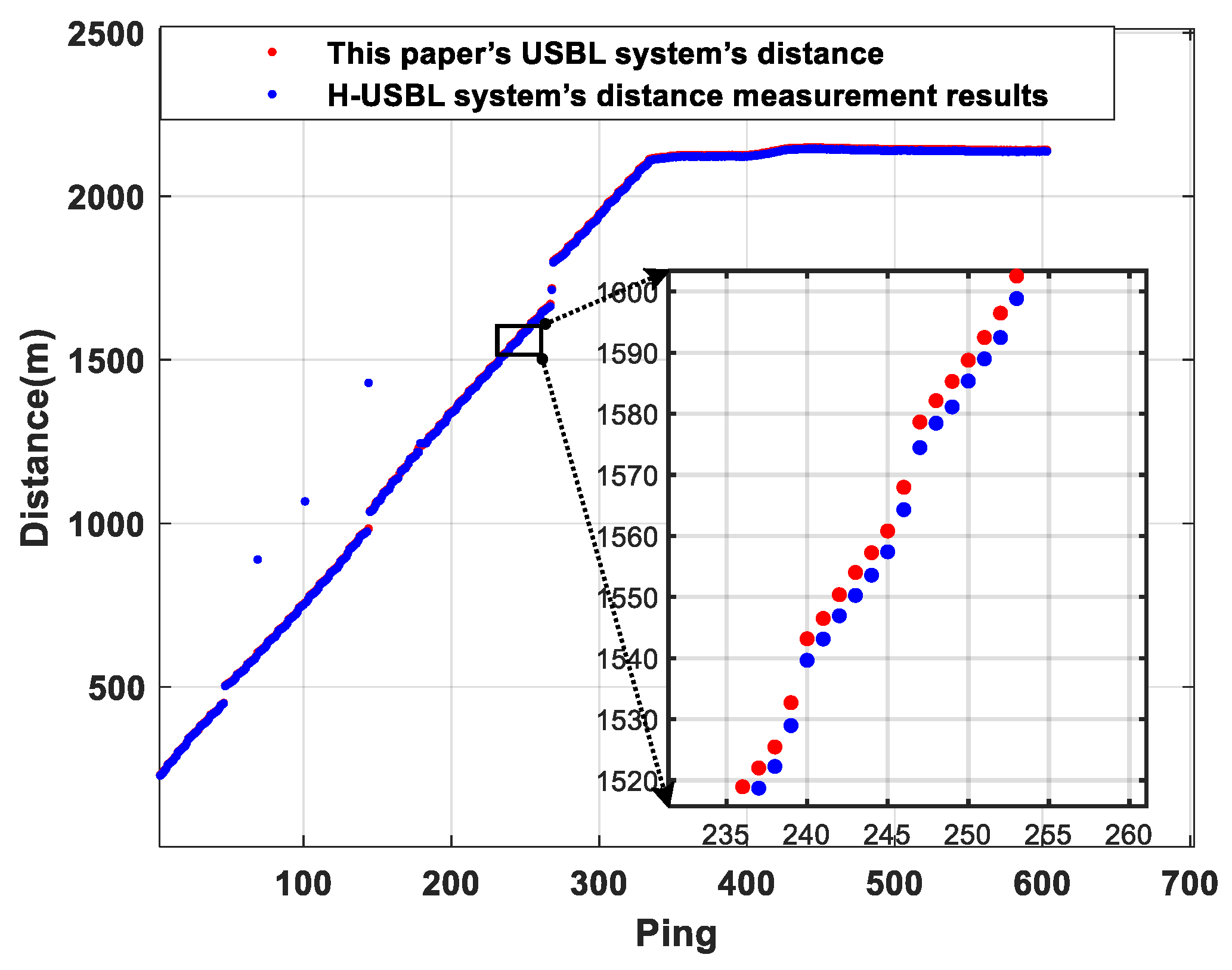

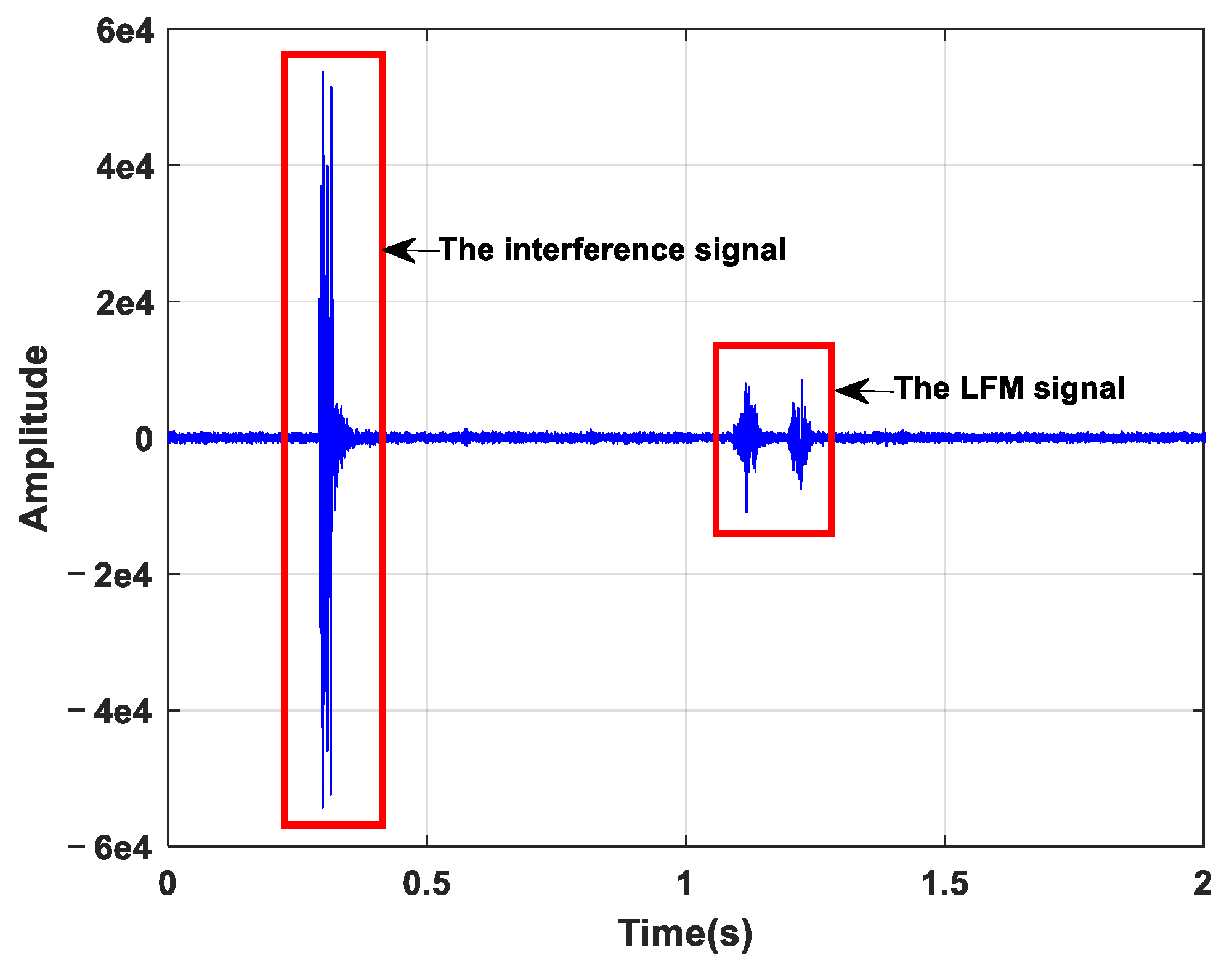


| Source Coordinates | Algorithm | RMSE (m) | Positioning Accuracy (%R) | ||
|---|---|---|---|---|---|
| X-Axis | Y-Axis | Z-Axis | |||
| (−100, 80, −11,000) | Algorithm in reference [11] | 3.4824 | 3.5471 | 0.0661 | 0.0433 |
| Proposed algorithm | 1.5315 | 1.5791 | 0.0230 | 0.0217 | |
| (−2084, 2084, −11,000) | Algorithm in reference [11] | 3.5373 | 4.5790 | 1.1139 | 0.0520 |
| Proposed algorithm | 1.5583 | 1.8699 | 0.4373 | 0.0242 | |
| (−4490, 4490, −11,000) | Algorithm in reference [11] | 3.6624 | 5.0260 | 2.1624 | 0.0556 |
| Proposed algorithm | 1.7012 | 2.1838 | 1.1896 | 0.0249 | |
| (−7778, 7778, −11,000) | Algorithm in reference [11] | 5.4217 | 5.9891 | 5.0455 | 0.0681 |
| Proposed algorithm | 2.7301 | 2.7086 | 2.7184 | 0.0319 | |
Disclaimer/Publisher’s Note: The statements, opinions and data contained in all publications are solely those of the individual author(s) and contributor(s) and not of MDPI and/or the editor(s). MDPI and/or the editor(s) disclaim responsibility for any injury to people or property resulting from any ideas, methods, instructions or products referred to in the content. |
© 2024 by the authors. Licensee MDPI, Basel, Switzerland. This article is an open access article distributed under the terms and conditions of the Creative Commons Attribution (CC BY) license (https://creativecommons.org/licenses/by/4.0/).
Share and Cite
Liu, Y.; Xue, J.; Wang, W. A High-Precision, Ultra-Short Baseline Positioning Method for Full Sea Depth. J. Mar. Sci. Eng. 2024, 12, 1689. https://doi.org/10.3390/jmse12101689
Liu Y, Xue J, Wang W. A High-Precision, Ultra-Short Baseline Positioning Method for Full Sea Depth. Journal of Marine Science and Engineering. 2024; 12(10):1689. https://doi.org/10.3390/jmse12101689
Chicago/Turabian StyleLiu, Yeyao, Jingfeng Xue, and Wei Wang. 2024. "A High-Precision, Ultra-Short Baseline Positioning Method for Full Sea Depth" Journal of Marine Science and Engineering 12, no. 10: 1689. https://doi.org/10.3390/jmse12101689






